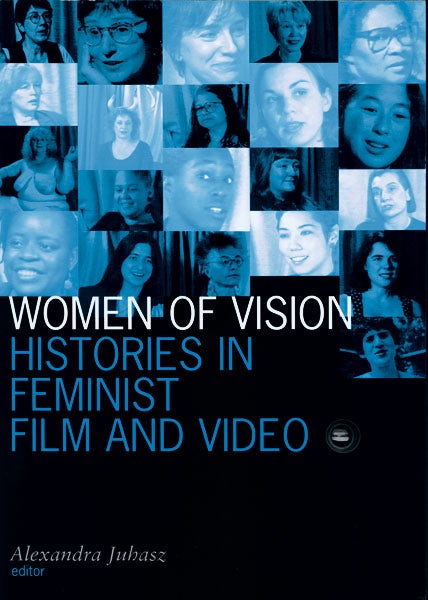Peter Gidal (ed.): Structural Film Anthology (1976/1978)
Filed under book | Tags: · abstract cinema, experimental film, film, film history, film theory, materialist film, structural film

“This anthology of texts about what have been termed Structural Films attempts to bring together some of the more important essays and articles on those films which have formed the core of film work in this field since its inception. It is a first attempt to bring together texts from Europe, Britain and the United States. In the past we have been inundated with the parochial, American view of avant-garde film work, as expounded on both sides of the Atlantic. This anthology was published to coincide with the series of eighteen programmes, Structural Film Retrospective, at the National Film Theatre, London, in May 1976.
As it happened, no film-maker was included in the programmes who had not produced relevant work before 1971, though many works were from after that year. No new films were introduced; this was a retrospective programme intended to enable a viewing that saw each film in the context of each other film, that could recognise alliances and misalliances between films, that could attempt to deal with the individual filmworks and the critical practice which preceded or followed.
In some cases, the critical practice here is a virtually complete repression through ideology of the text of the film; in the gaps presented work can now take place. The lengths of the sections are dictated by the materials of interest available, and unfortunately in a few cases only very slight material existed. I hope that the selection will not offend; the younger Americans have been left out, as have many of the younger British, because of the wish for a solid retrospective programme as elucidated above. No doubt there are quite a few film-makers completely unknown to me, and to nearly everyone else, who have done and may be doing very important work, and whose work remains ‘out of view’ for a variety of sociological reasons, none of which are praiseworthy. I wish to thank all the film-makers and writers, obviously.
For this reprint nothing has been changed, though a few minor errors have been corrected and Ben Brewster’s review of the Anthology inScreen has been included as an afterward. I call attention to the ‘Theory and Definition of Structural/Materialist Film’ article in its original form in Studio International (November 1975), and to Deke Dusinberre’s article relating to it in Screen (Summer 1977). P.G., January 1978” (Introduction)
With an introduction by Peter Gidal
Publisher British Film Institute, London, 1976; reprint from 1978
ISBN 0 85170 0535
144 pages
PDF (updated on 2012-7-14)
Comment (0)Alexandra Juhasz (ed.): Women of Vision: Histories in Feminist Film and Video (2001)
Filed under book | Tags: · cinema, feminism, film, film history, film theory, gender, video, video art, women

“Legends and rising stars of feminist film and video tell their stories.
Alexandra Juhasz asked twenty-one women to tell their stories-women whose names make up a who is (and who will be) who of independent and experimental film and video. What emerged in the resulting conversations is a compelling (and previously underdocumented) history of feminism and feminist film and video, from its origins in the fifties and sixties to its apex in the seventies, to today.
Women of Vision is a companion piece to Juhasz’s 1998 documentary of the same name. The book presents the complete interviews, allowing readers to hear directly the voices of these articulate, passionate women in an interactive remembering of feminist media history. Juhasz’s introduction provides a historical, theoretical, and aesthetic context for the interviews.
These subjects have all shaped late twentieth-century film and video in fundamental ways, either as artists, producers, distributors, critics, or scholars, and they all believe that media are the most powerful tools for effecting change. Yet they are a very diverse group, with widely varying personal and professional backgrounds. By presenting their interviews together, Juhasz shows the differences among those involved in feminist media, but also the connections among them, and the way in which the field has been enriched by their sharing of knowledge and power. In the end, Juhasz not only records these women’s careers, she broadens our understanding of feminism and shows how feminist history and documentary are made.”
Interviewees: Pearl Bowser, Margaret Caples, Michelle Citron, Megan Cunningham, Cheryl Dunye, Vanalyne Green, Barbara Hammer, Kate Horsfield, Carol Leigh, Susan Mogul, Juanita Mohammed, Frances Negrón-Muntaner, Eve Oishi, Constance Penley, Wendy Quinn, Julia Reichert, Carolee Schneemann, Valerie Soe, Victoria Vesna, and Yvonne Welbon.
Publisher University of Minnesota Press, 2001
Visible Evidence series, 9
ISBN 081663372X, 9780816633722
343 pages
PDF (updated on 2012-7-14)
Film: Women of Vision: 18 Histories in Feminist Film and Video (1998, 83 min)
Elizabeth Legge: Michael Snow: Wavelength (2009)
Filed under book | Tags: · art, experimental film, film, film theory, structural film

“In 1966 Michael Snow made the film Wavelength, a masterful exploration of the nature of perception. Throughout the film’s forty-five minutes, the camera slowly zooms from one end of a New York City loft space to its far wall, accompanied by the sound of a rising sine wave.
In this critical study, Elizabeth Legge describes Wavelength as a film of expertly managed tensions, sensuous beauty, subtle light and colour and recession into perspectival depth. Wavelength was crucial to critics’ efforts to establish a vocabulary for the experimental film movement emerging a the time, and has functioned ever since as a blue screen in front of which a range of ideological and intellectual dramas have been played.”
Publisher Afterall Books, 2009
One Work series
ISBN 1846380561, 9781846380563
112 pages
PDF (updated on 2020-7-13)
Comments (2)
